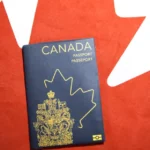
A Comprehensive Guide to the Economic Mobility Pathways Pilot (EMPP) for Skilled Refugees and Displaced People
Table of Contents:
- Introduction
- What is the Economic Mobility Pathways Pilot (EMPP)?
- Eligibility Criteria for EMPP
- Refugee or Displaced Person Status
- Meeting the Requirements for Work Experience, Education, and Language Skills
- Admissibility to Canada
- Two Pathways to Apply for EMPP
- Federal EMPP
- Regional EMPP
- How to Apply for the EMPP
- Federal EMPP Application Process
- Regional EMPP Application Process
- Partner Organizations that Can Assist You
- After You Apply: What Happens Next?
- Application Processing Stages
- Additional Steps: Interviews, Medical Exams, and Biometrics
- Preparing for Life in Canada
- Pre-arrival Support and Orientation
- Post-arrival Services and Assistance
- Final Thoughts: Why EMPP is a Game Changer for Refugees and Displaced Workers
1. Introduction
Canada is known for its diverse and inclusive society, providing refuge and opportunities for people in need, including skilled refugees and displaced individuals. One of the programs designed to help these individuals successfully immigrate to Canada is the Economic Mobility Pathways Pilot (EMPP). The EMPP aims to streamline the immigration process for refugees by offering support for their settlement in Canada.
In this comprehensive guide, we’ll break down the eligibility requirements, the application process, and the benefits of this program, helping you navigate the steps to begin a new life in Canada.
2. What is the Economic Mobility Pathways Pilot (EMPP)?
The Economic Mobility Pathways Pilot (EMPP) is a Canadian immigration initiative specifically designed for skilled refugees and displaced persons. This program allows individuals with the necessary skills and experience to become permanent residents of Canada while also benefiting from various support mechanisms like fee waivers, job placement assistance, and loans for settlement costs.
The pilot aims to match refugees and displaced people with economic immigration programs and provide a pathway for them to build successful futures in Canada, contributing to the Canadian workforce and society.
3. Eligibility Criteria for EMPP
To apply for the EMPP, applicants must meet specific eligibility criteria. Let’s break it down into three main requirements:
Refugee or Displaced Person Status
First and foremost, you must be recognized as a refugee or displaced person. To prove this status, you will need to provide one of the following documents:
- A positive Refugee Status Determination (RSD) from the UN Refugee Agency (UNHCR) or a refugee-hosting state.
- Proof of being registered or recorded as a person of concern by UNHCR.
- A refugee certificate from the United Nations Relief and Works Agency for Palestine Refugees (UNRWA).
- Proof of temporary protected status from a country or jurisdiction, along with a completed durable solution information form (IMM 0195).
If you don’t have any of these documents, you can work with a trusted partner organization to verify your refugee status and issue a referral letter, which you can submit with your application.
Meeting Work Experience, Education, and Language Skills Requirements
Your qualifications play an essential role in determining whether you’re eligible for the program. Depending on the path you choose (federal or regional EMPP), you’ll need to meet certain requirements in terms of:
- Work experience (e.g., a minimum number of years in a specific occupation).
- Educational qualifications (such as relevant degrees, diplomas, or certifications).
- Language proficiency (in either English or French, as per Canadian immigration standards).
Admissibility to Canada
Applicants must also be admissible to Canada. This means that you must undergo medical, security, and criminality checks to ensure you meet Canadian standards. All applicants (including family members) will need to undergo immigration medical exams as part of the process.
4. Two Pathways to Apply for EMPP
There are two main pathways to apply for the Economic Mobility Pathways Pilot (EMPP): the Federal EMPP and the Regional EMPP. Here’s a closer look at each option.
Federal EMPP
The Federal EMPP is the direct route where you apply based on your work experience, education, and language skills. In this stream, there are two sub-options:
- Job Offer Stream: If you already have a job offer from a Canadian employer, you can apply through this stream.
- No Job Offer Stream: This stream is temporarily closed but will reopen on January 1, 2025. You will be able to apply for permanent residency under this stream if you meet all other requirements.
Regional EMPP
The Regional EMPP involves applying through one of three economic immigration programs:
- Atlantic Immigration Program
- Provincial Nominee Program (PNP)
- Rural and Northern Immigration Pilot (RNIP) (currently closed to new applications)
To apply through the regional EMPP, you must first apply to a province, territory, or participating community under one of these programs and then submit an additional application for the EMPP.
5. How to Apply for the EMPP
Whether you’re applying through the federal or regional EMPP, you’ll need to complete the required application forms and submit the necessary documents. Below is a brief guide on how to proceed.
Federal EMPP Application Process
If you are applying directly to the Federal EMPP, you will need to submit a single application. You must demonstrate that you meet the requirements of the Job Offer or No Job Offer stream. This process is more straightforward because you apply directly through the EMPP.
Regional EMPP Application Process
If you are applying through the Regional EMPP, the application process involves two stages:
- First, you must apply to the relevant economic immigration program (e.g., Atlantic Immigration, Provincial Nominee Program, or Rural and Northern Immigration Pilot).
- Then, you will submit your application to the EMPP itself.
Partner Organizations That Can Assist You
Several non-governmental organizations (NGOs) can help you connect with employers in Canada, prepare your application, and support you throughout the process. Some of the trusted partner organizations include:
- TalentLift
- Talent Beyond Boundaries
- Jumpstart Refugee Talent
- RefugePoint
- HIAS
- Aman Lara
6. After You Apply: What Happens Next?
Once you’ve submitted your application, the Canadian immigration authorities will process it in two stages:
Stage 1: Review of Forms and Documents
In this stage, officials will check that all required forms are completed and signed. If everything is in order, you will receive an Acknowledgement of Receipt (AOR) with your application number. If there are missing forms or documents, you will be notified and given the chance to correct your application.
Stage 2: Eligibility and Admissibility Check
In this stage, your application will be reviewed to confirm your eligibility and admissibility to Canada. This includes reviewing your refugee status, work experience, and meeting the requirements of the immigration program you applied for.
7. Preparing for Life in Canada
Once your application is approved, you will begin preparing for your new life in Canada. Here’s what you can expect:
Pre-arrival Support and Orientation
Before arriving in Canada, you’ll gain access to the Canadian Orientation Abroad (COA) program, which helps you prepare for life in Canada. You’ll learn about Canadian culture, employment practices, and settlement services that will be available to you once you arrive.
Post-arrival Services and Assistance
After landing in Canada, you will have access to numerous settlement programs, including language training and employment assistance. These programs will help you integrate into your new community and start your career.
8. Final Thoughts: Why EMPP is a Game Changer for Refugees and Displaced Workers
The Economic Mobility Pathways Pilot (EMPP) is a groundbreaking initiative for refugees and displaced individuals who have the skills and experience needed to succeed in Canada. By offering a streamlined immigration process, financial assistance, and settlement support, Canada is making it easier for skilled refugees to contribute to the Canadian economy and society.
This program not only provides opportunities for individuals to rebuild their lives but also helps address labor shortages in various industries, benefiting both immigrants and the Canadian economy as a whole.
Takeaway: If you are a skilled refugee or displaced person looking to immigrate to Canada, the EMPP could be the perfect pathway for you. Make sure to check the eligibility criteria, gather the necessary documents, and reach out to partner organizations for support during the application process. The journey to Canada may be challenging, but the rewards of a new life await!
For a free consultation about your work permit and student permit options, reach out to the CAD IMMIGRATION today!





